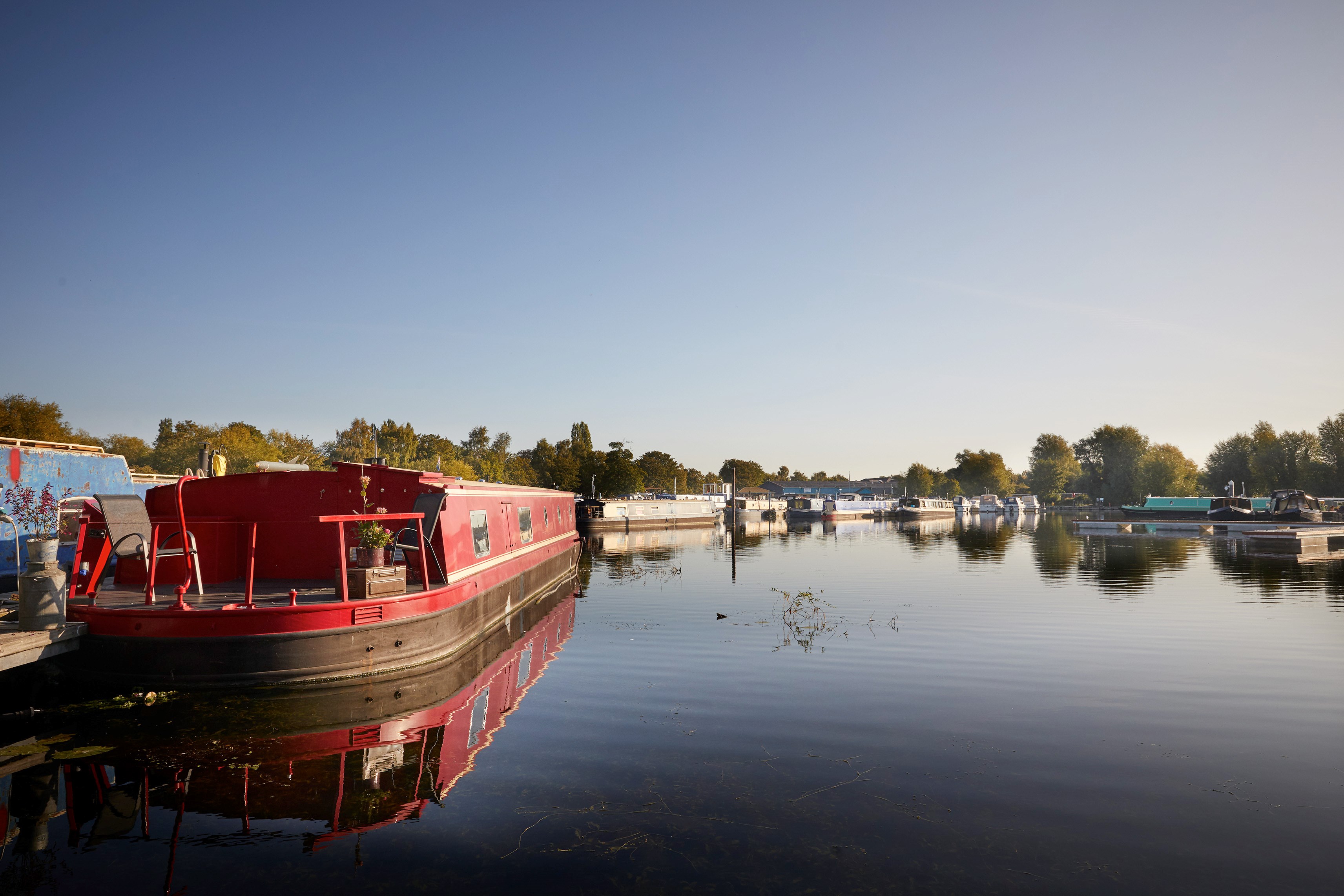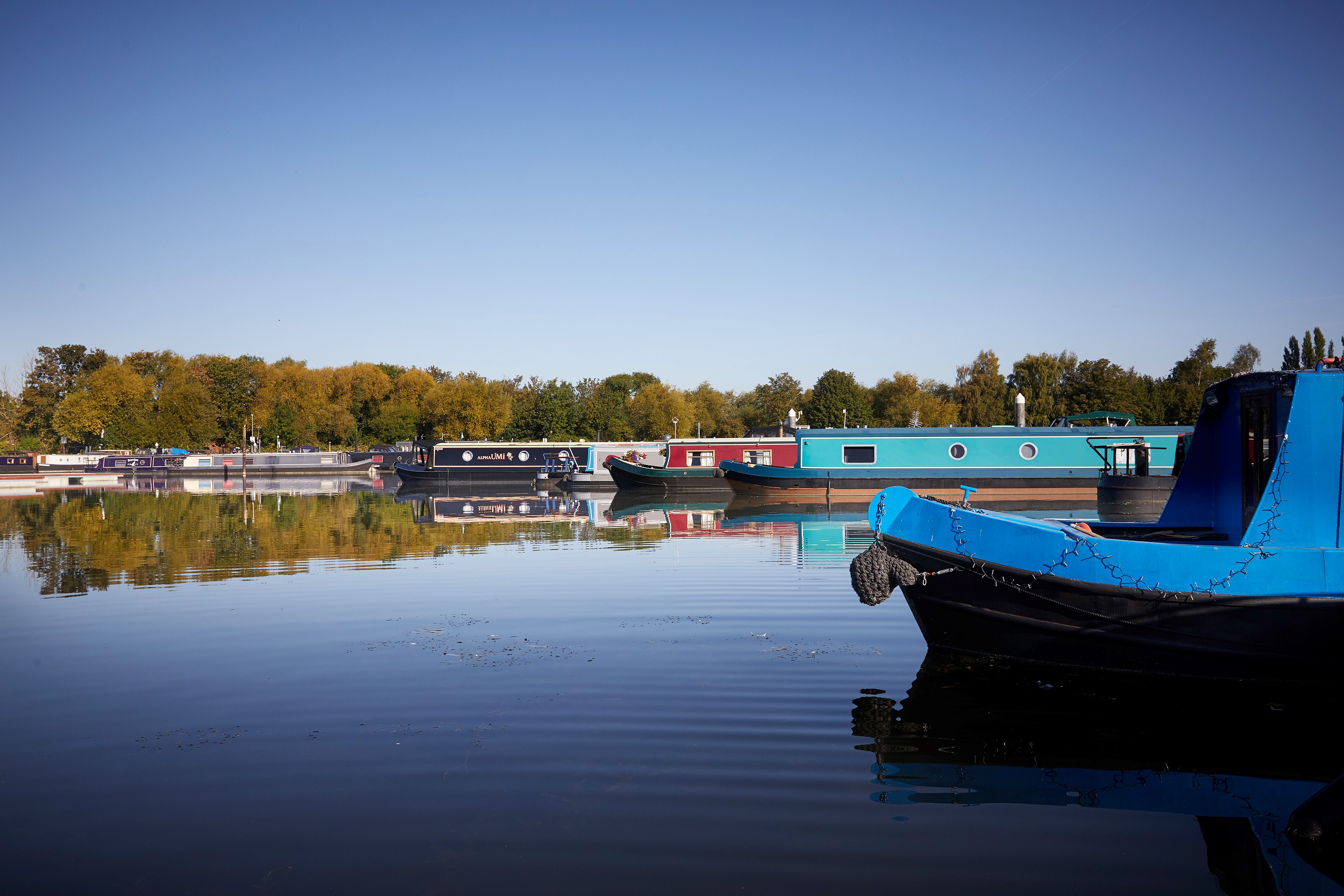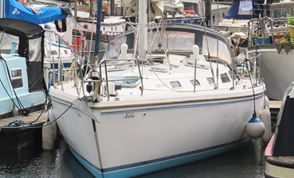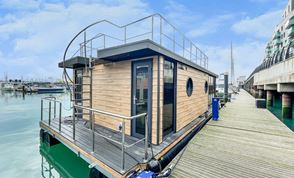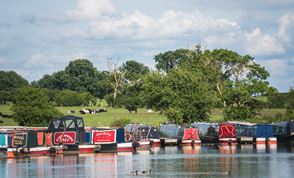Grand Union Canal - Complete Guide for Boaters & Visitors
Grand Union Canal Guide for Boaters and Visitors
Looking to explore the Grand Union Canal? This is the perfect guide for you.
Here, you’ll find a complete boating guide to this famous canal route.
Topics on this page include:
- What to do along the Grand Union Canal?
- Where are the best places to moor near the Grand Union Canal?
- How long does it take to explore the Grand Union Canal?
And much more!
Let’s get right into it:
What and Where is the Grand Union Canal?
The Grand Union Canal is the longest canal in the UK and one of the best canal holidays in the UK.
Stretching across several counties from London to Birmingham, the canal covers 137 miles of stunning countryside and has become a top destination for boaters.
Originally, this network of waterways was not a single route but a collection of separate canals.
Canals like the Oxford Canal, the Regents Canal, and others were built throughout the 18th and 19th centuries to support the booming Industrial Revolution.
In 1929, these were all connected to form what you know today as the Grand Union Canal.
Nowadays, the Grand Union Canal is the place to be for a beautiful tour of the UK.
The canal's path is well-marked and accessible throughout the year.
Whether you're looking for a leisurely stroll, a boating adventure, or a cycle along the towpaths, you're greeted with stunning views, an array of wildlife, and a peek into the industrial era that shaped modern Britain.
Grand Union Canal at a Glance:
Canal length: 137 miles
Number of locks: 158
Tunnels: 3
Bridges: Over 160
Starts: Brentford on the River Thames, London
Ends: Gas Street Basin, Birmingham.
Maximum Boat Dimensions:
Before embarking on a boating trip, it’s important to know what size boats can be used.
The maximum dimensions for a canal boat on the Grand Union Canal are:
Maximum Length: 72 feet (21.94m)
Maximum Width: 12 feet 6 inches (3.81m)
Maximum Draught: 3 feet 8 inches (1.11m)
Maximum Headroom: 6 feet 3 inches (1.90m)
Exceptions do exist along the route, particularly where the Grand Union Canal meets other waterways.
For instance, larger boats can navigate the waterway where it joins the River Thames.
If you are handling a larger boat, you may struggle with navigation through the Stoke Bruerne lock flight or when passing through the Blisworth Tunnel.
As water levels can fluctuate, the maximum draught allowance may also change, so be sure to keep an eye on the latest waterway reports from the Canal and River Trust.
You’ll also need to keep in mind that any alterations to your boat, such as fixed wheelhouses or extended roofs, could change your boat’s size and limit parts of the waterway you can access.
Where to Moor Along the Grand Union Canal?
The Grand Union Canal is one of our favourite routes in the UK.
But due to the length of the waterway, you’ll need a place to stop off.
At Aquavista, we’re the UK’s biggest collection of marinas. This means we’ve got the perfect place to stay near the Grand Union Canal.
Our top choices on or near the waterway include:
- Apsley Marina is found on the Grand Union Canal and is part of the Dickinson Paper Mill.
- Brinklow Marina is found on the northern arm of the Oxford Canal.
- Cowroast Marina is found on the Tring Summit.
- Crick Marina is found on the Leicester Line of the Grand Union Canal.
- Ventnor Marina is found in the Warwickshire countryside with easy access to the Grand Union Canal.
- Packet Boat Marina is located on an ideal stretch of the canal with 23 miles of lock-free waterway.
- Wigrams Turn Marina is set on the junction of the Oxford and Grand Union Canals.
Whatever your choice, Aquavista is the perfect place to find a marina near you.
What to Do at the Grand Union Canal?
The diverse route of the Grand Union Canal offers you more than just a journey between two points.
From the Chiltern Hills through the Warwickshire countryside to the bustling capital, each section of the canal tells a different story.
So whether you want to see stretches of tranquil countryside or historic feats of engineering, your canal experience will massively differ depending on where you choose to journey.
Must-See Visits:
Some of the top sights you must see include:
- The Blisworth Tunnel: At 2,813 metres long, it's the third-longest navigable canal tunnel in the UK.
- Stoke Bruerne: Home to a flight of locks and a canal museum offering insights into the canal's history.
- The Tring Summit: The highest point of the canal at 390 feet above sea level.
Should you fancy a spot of shopping or a tasty treat, there are numerous canal-side pubs and boutiques to explore.
Places like the Black Jack's Mill and the Grove Lock are renowned for their local cuisine and offer a splendid view of the canal.
Daily Activities:
If you're looking for a leisurely day out, you’ve got plenty to do along the Grand Union Canal.
Some activities you might enjoy include:
- Picnicking by the water's edge.
- Bird-watching for local species.
- Cycling along well-maintained paths that stretch for miles.
- Fishing (but make sure to check for the relevant permits).
And let's not forget the community events and festivals that often take place along the canal!
From local fairs to boat rallies, you’ll always find something to do along this waterway.
Grand Union Canal FAQs:
How Long is the Grand Union Canal?
The Grand Union Canal spans a total of 137 miles and winds through different parts of England.
It passes through areas of London, Leicester, and Birmingham.
You can expect about a week's worth of travel to fully explore the Grand Union Canal.
How many locks are on the Grand Union Canal?
There are 158 locks along the Grand Union Canal, including 21 locks on the ‘Stairway to Heaven’ at Hatton.
How Deep is the Grand Union Canal?
The depth of the Grand Union Canal varies along its length, changing at different points.
At its deepest part, the canal reaches a depth of 5 feet and 6 inches.
Can You Cycle Along the Grand Union Canal?
Cyclists are welcome to pedal along the Grand Union Canal’s towpaths.
There are several designated cycling routes to allow cyclists to travel safely and see the best of the canal’s scenery.
What Fish Are in the Grand Union Canal?
The Grand Union Canal is home to a number of fish species, including perch, roach, pike, chubb, carp, and tench.
Anglers can find a variety of fish, making the canal a popular location for a day’s fishing.
When Was the Grand Union Canal Built?
The Grand Union Canal is different from other canal routes in that it wasn’t purpose-built.
Rather, it’s the amalgamation of different canals and waterways that were built between 1894 and 1929.
It was initially a series of separate canals designed to ferry coal, iron, and other goods to and from London and the Midlands.
1794 marked a pivotal year with the opening of the Grand Junction Canal, which would eventually become part of the Grand Union.
Over time, other canals like the Oxford Canal and the Warwick and Napton Canal were joined, expanding the network's reach.
By the 1920s, competition from the railways and emerging road transport led to the decision to combine the waterways.
This culminated in 1929 with the formation of the Grand Union Canal you see today.
discover the life
Get in touch




